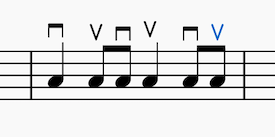OTDL - New tunes, interviews and shuffles pt. deux
Hey friends,
This is Old Time Download – where I share what I know about Old Time music, what I'm working on, what I'm listening to, and more.
What's new
Though I haven't been playing much music lately I have been teaching, coding and traveling. I'm looking forward to getting back to Juneau and picking some tunes with you all.
I've had a few people ask me if I have a Patreon. I do not. However, I'm considering it. If there's more interest in that, please let me know.
What I'm listening to
Beasties in the Sugar (Bandcamp, YouTube, Spotify, Apple Music) by The Hot Seats
My history with this tune:
- ~ 11 years ago (I think??): I discover this grainy Clifftop video and fall in love with this tune. It also scares me and I will not attempt to play it for years.
- ~ 7 years ago: I decide to tackle it and post this video. A friend from New Orleans tells me this tune is by Hank Bradley; Hank's version is decidedly more demonic. I love it but his version feels unapproachable to this day.
- Ensuing years: I forget it. I learn it. I forget it. I learn it... This tune is a quintessential jam buster and no one has ever heard of it so it doesn't help that I can't play it with other people.
- Real recent: I discover this one from The Hot Seats. It is awesome again.
I wish I could play it like their fiddler but I just don't have that skill set. Where they decide to hold onto notes or anticipate them is, to me, perfection. Also, I'm a big fan of the three finger banjo sound, which this has in spades. It's cross-A tuning. Learn it and let's play it!
Interview I'm enjoying
Devin Champlin - Get Up in the Cool
Hey, it's out friend Devin Champlin on an (the??) Old Time podcast. I always enjoy hearing people I know share their take on traditional music. Trail to Mexico is my favorite song in this interview (at 22:40) and I'm feeling inspired to work up Rabbit Under a Collard Leaf.
More shuffle tricks
Recall the basic shuffle pattern:

Note: The square "n" shape indicates a down bow and the "v" indicates an up bow.
If you chop off the last two short bow strokes of a shuffle, you can replace them with a quarter note that extends into the long bow of the next shuffle/measure. This is one way to anticipate, say, the B part of a tune when you're coming out of the A.

Since shuffles are often played over runs of eighth notes, here's a contrived example of that:

It isn't obvious but this is the SAME bowing as in the previous example.
Now, let's look at a real scenario. Shove The Pig's Foot A Little Further Into The Fire – first half of the A part.

I've added one extra thing here, a pickup note that anticipates the first measure of the tune. You would start playing that note on the upbeat... i.e. When your foot is up in the air if you're tapping along.
Also, the last note in this example fills the same role as the pickup. It slurs over to the first measure again.
It ain't easy, I get it. Keep at it, see if you can apply it to tunes you know and let me know if you have any questions. I also realize notation doesn't always mix with OT musicians so I'm hoping to make a video explaining some of this stuff soon too.
That's all for now. Thanks for being here and feel free to forward this on to fiddling friends, acquaintances, your boss, etc.
Carter 🧟♀️🧛♀️🧙♂️
